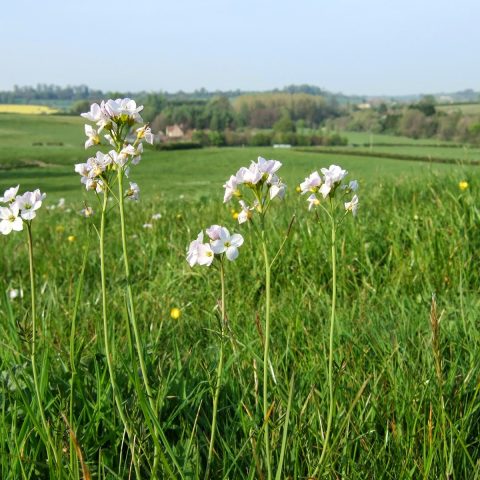Bangor University School of Ocean Sciences' story
The seabed supports ecosystems delivering multiple services including fishing, carbon storage, aggregates and coastal protection - and hosts an increasing volume of critical infrastructure.
The climate crisis will stretch impacts further into coastal zones, as storm waves and rising sea levels alter how energy from the sea is transferred to the seabed. These forces change the way sediments move and stay in suspension, potentially altering bed position and structure.
The changes can have wide-reaching impacts for organisms living on or in the seabed, potentially changing biodiversity and delivery of ecosystem services. Impacts at the seabed can extend through the food chain to the water column and beyond, as bottom-dwelling fish are consumed by seabirds and cetaceans. Seabed changes can also cause submarine cable failure. As renewable energy projects expand globally and distances from shore increase to 50-90km to take advantage of wind strengths, cable failures - with increased cost and risk - reduce the efficiency of energy conversion and damage investor confidence.
During this pivotal time of energy transition, it is of crucial importance to unlock the potential of the seabed and to better understand both risks and opportunities for seabed natural habitats near the infrastructure.
Bangor University's School of Ocean Sciences conducted experiments recently, treating the beautifully complex area offshore North Wales as our natural laboratory. The Engineering and Physical Sciences Research Council funded us to lower a frame from Bangor University's research vessel Prince Madog in 2020 and in 2021. On the frame, we mounted a piece of submarine cable, kindly supplied by JDR Cables. With acoustic instrumentation, we monitored how the flow reacted to the structure, and how the seabed reacted to the change in flow. This allowed us to document the turbulent dynamics due to the object, and how the stress on the bed mobilised the sediments.
We are now bringing together a larger team of experts from different disciplines and seeking funds to provide and translate new scientific knowledge of how sediment transport pathways change in response to windfarm infrastructure and under climate predictions. We want to find out how that alters seabed habitats and drives changes to the fish and predators that depend on them. All these interactions have a specific role to play in the ultimate net gain or loss to the ecosystem services. We will design scenarios where we consider offshore windfarm size, type, array geometry and scour mitigation strategies, predator behaviour and the ecosystem's vulnerability to change.
Useful learnings from Bangor University School of Ocean Sciences
We benefitted from collaborating with people outside our sector, and with people outside my own area of expertise, who have different backgrounds and experiences. A diverse team with different perspectives will always generate better quality results with a more meaningful impact.
I never realised that geological changes to the seabed could be a key driver of seabird population dynamics. My biological colleagues inspired me to look far beyond the geological aspects of seabed interactions with windfarm infrastructure, and this has led to a very interesting research proposal with partners I would not have thought of, such as the Royal Society for the Protection of Birds (RSPB).
When designing a project, perhaps think about involving schoolchildren from diverse backgrounds. Encourage them to engage with numerical and environmental sciences through meaningful and fun applications, such as linking long-term weather patterns with climate change.
My involvement in the multi-institutional projects, part-funded by Welsh Government and the European Union, have inspired me. Bangor University's SEACAMS projects helped drive growth in the Welsh blue economy by supporting the developing commercial marine renewable sector in Wales. The university's Smart Efficient Energy Centre (SEEC) project not only helps tackle challenges of increasing the sustainability of energy supply and utilisation, but also to minimise negative environmental impacts, including net carbon emissions and biodiversity.
The team in the funded and proposed projects so far includes: Bangor University, the National Oceanographic Centre, RSPB, the Joint Nature Conservation Committee, HR Wallingford, and the University of Liverpool. The team is in a large partnership including Nortek, CGG Llandudno, Intertek, renewable energy company RWE, The European Subsea Cables Association (ESCA), JDR Cables, Cooper Marine Advisors and UK metocean solutions provider Partrac. If the plan reaches phase two, other partners will be contacted, such as the Welsh Government and Natural Resources Wales.
Bangor University School of Ocean Sciences' metrics
Seeing how changes to wind, waves, tides, and sea level rise will combine to flow around windfarms; how the forces will cause changes to seabed stress, impact habitat distribution and prey availability; and how mobile seabeds will impact renewable energy infrastructure for windfarms.
In addition, we hope that our work will showcase how renewable energy infrastructure is developed in collaboration with research institutes and with sustainability at the heart of the strategy.







